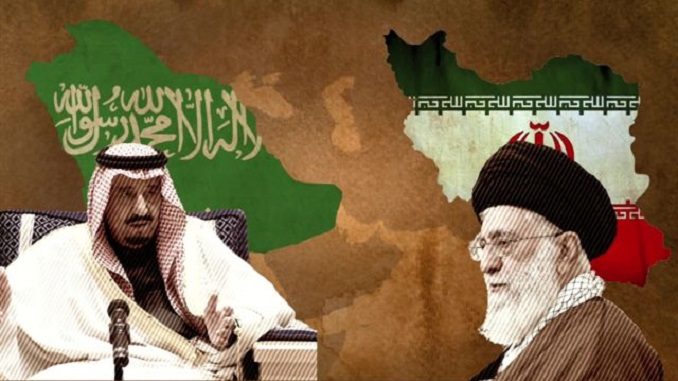
Saudi Arabia appears to be on a warpath across the Middle East and Saudi officials’ bellicose rhetoric after the launch of a ballistic missile targeting Riyadh from Yemen, appear to herald a new period of assertiveness against Iranian interests across the Middle East, Foreign Policy writes in its analysis.
Let’s take a look at the track record so far.
The confrontation between Saudi Arabia and Iran is taking place across a swath of the Middle East in which, over the last decade, states have partially ceased to function — Iraq and Lebanon — or collapsed completely, as in the case of Syria and Yemen. A war over the ruins has taken place in each country, with Riyadh and Tehran arrayed on opposing sides in all of them. So far, in every case, the advantage is very clearly with the Iranians.
In Lebanon, Hezbollah vanquished the Saudi-sponsored “March 14” alliance of political groups that aimed to constrain it. The establishment of a cabinet dominated by Hezbollah in December 2016, and the appointment of Hezbollah’s ally Michel Aoun as president two months earlier, solidified Iran’s grasp over the country. Riyadh’s subsequent withdrawal of funding to the Lebanese armed forces, and now its push for Hariri’s resignation, effectively represent the House of Saud’s acknowledgement of this reality.
In Syria, Iran’s provision of finances, manpower, and know-how to the regime of President Bashar al-Assad has played a decisive role in preventing the regime’s destruction. The Iranian mobilization of proxies helped cultivate new local militias, which gave the regime access to the manpower necessary to defeat its rivals. Meanwhile, Sunni Arab efforts to assist the rebels, in which Saudi Arabia played a large role, ended largely in chaos and the rise of Salafi groups.
In Iraq, the Islamic Revolutionary Guard Corps has developed an officially-sanctioned, independent military force in the form of the 120,000-strong Popular Mobilization Units (PMU). Iran also enjoys political preeminence in Baghdad. The ruling Islamic Dawa Party is traditionally pro-Iranian, while the Badr Organization controls the powerful interior ministry, which has allowed it to blur the boundaries between the official armed forces and its militias. Saudi Arabia, meanwhile, has been left playing catch up.
Saudi Arabia and Iran’s ongoing battle for power and influence rages on in the Middle East but analysts aren’t convinced that an all-out war will happen, yet. Many neighboring countries have been drawn into the conflict with Qatar, Yemen, Syria and Lebanon becoming proxy battlegrounds in the fight for regional dominance. A source in the Iranian government, who asked to remain anonymous due to the sensitivity of the situation, told CNBC last week that Iran was a “peaceful nation” but that it was prepared for conflict if that was the only option left to it.
“We love peace, we’re not looking for war but sometimes you should be prepared for war,” the source said.
Pat Thaker, regional director for the Middle East and Africa at the Economist Intelligence Unit, told CNBC that against a backdrop of “historic intense rivalry” between the two countries, it “doesn’t take much for tensions to flare up.”
If there was a conflict between Saudi Arabia and Iran, it would be the most dangerous times for the Middle East and the world. But neither Saudi Arabia nor Iran want war. The tensions between Saudi Arabia and Iran are often seen as a struggle for religious authority in the Middle East and Saudi Arabia was prepared to go to extreme lengths to stop any spread of Iranian influence.
“Saudi Arabia will fight tooth and nail to retain that position as the head of Islam and the Middle East. It will even go to bed with Israel to stop Iran,” Thaker said, alluding to the fact that the Jewish state is hardly a natural ally for the Islamic kingdom although they both fear and resent the rise of Iran.
